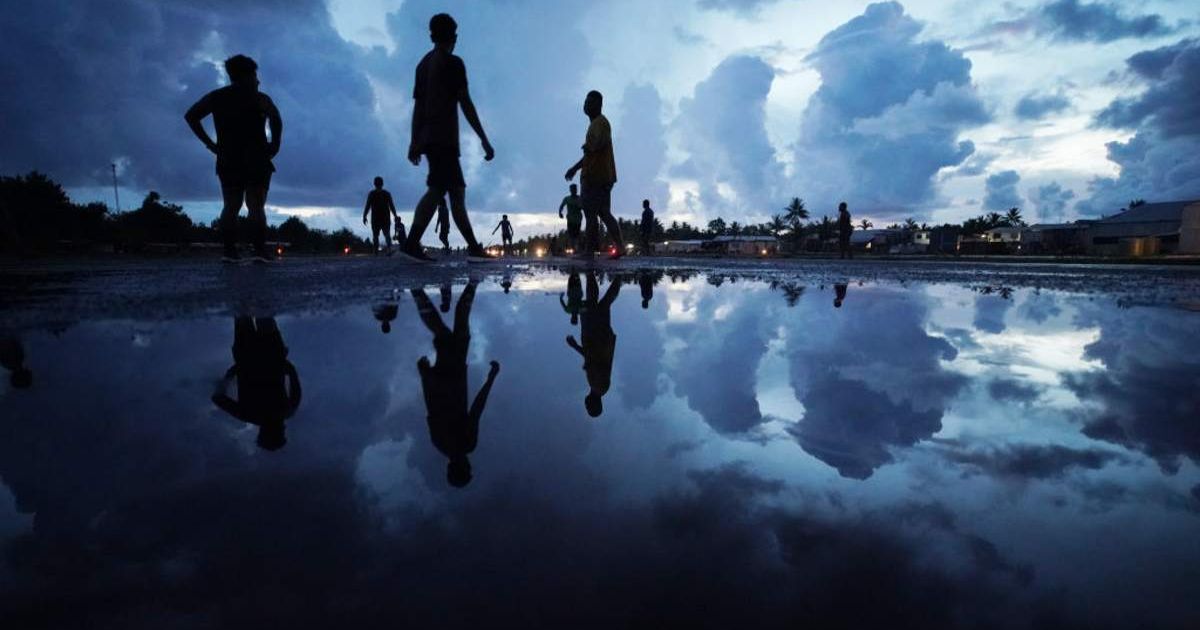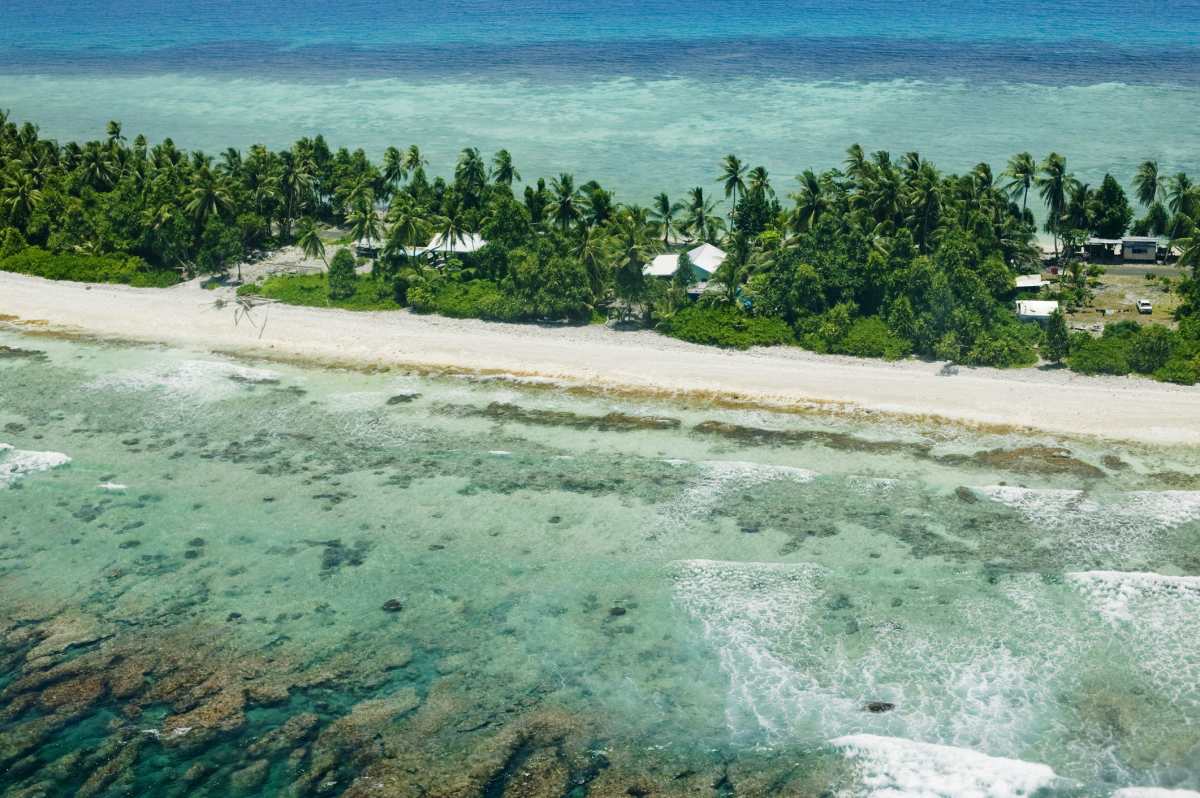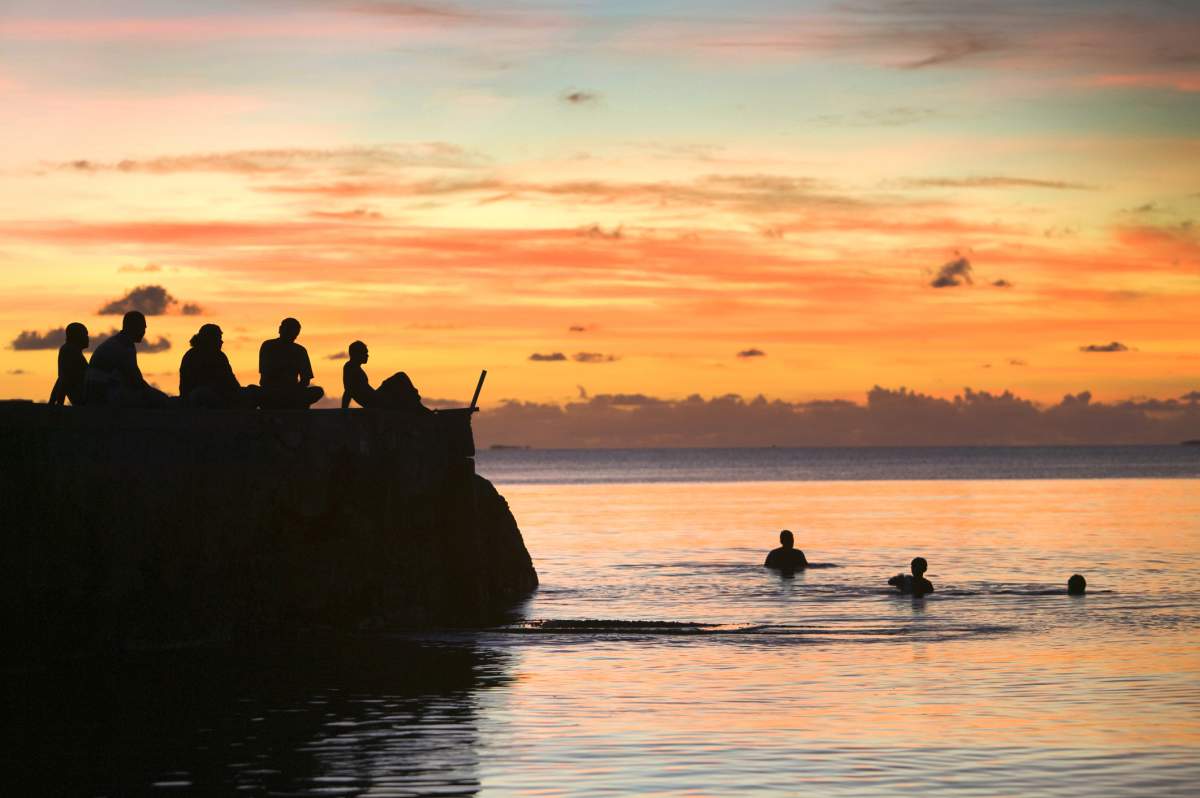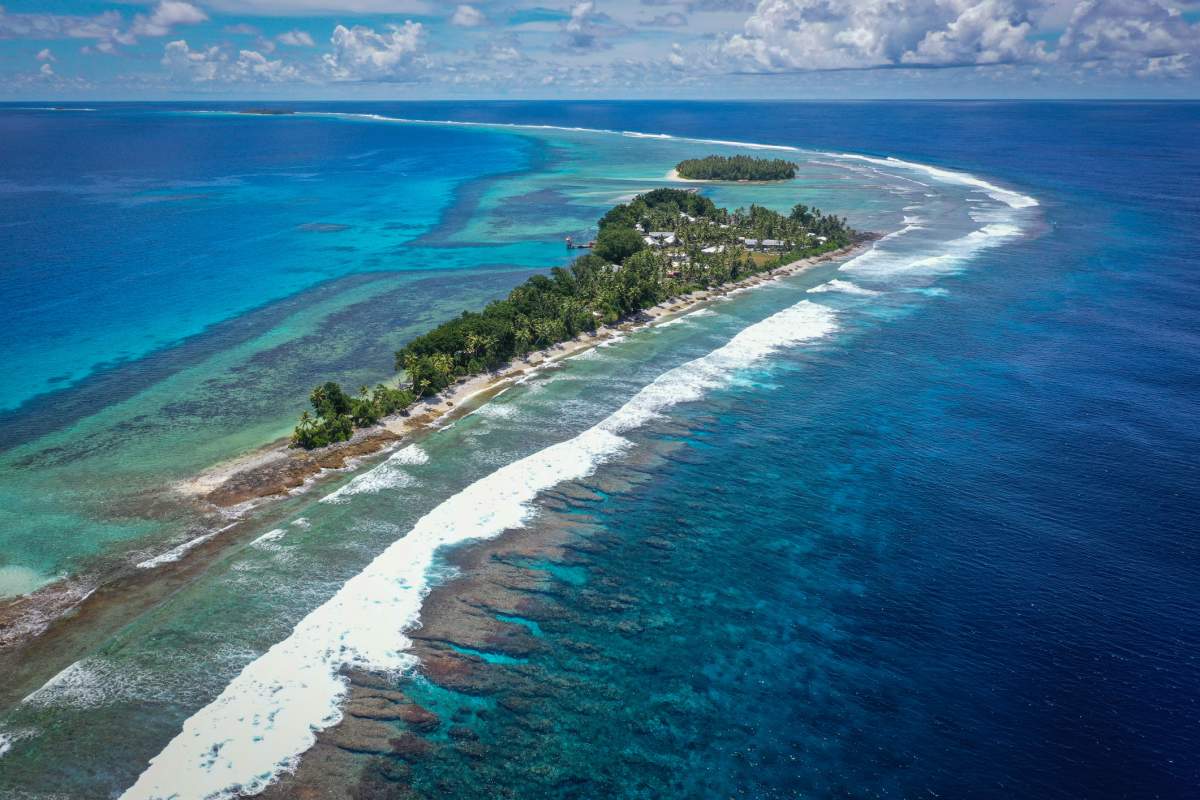Climate Change Is Sinking a Small Pacific Island, Leaving Its People With No Choice But To Flee

When the sky goes dark, an army of blue-tongued lizards crawls out of their hiding. Using their sticky footpads, they latch onto rotting wooden logs, leaf litter, moist mangroves, coral rubble, coastal beach rocks, village houseyards, and coconut husks to prey on little mosquitoes. By the time the dawn breaks, they’ve already digested the bugs and pests that could have gobbled up the villagers’ precious crops and plants. However, now that its seawaters are rising like a monster, they are threatening to devastate the entire civilization with wild floodwaters, not just of these reptiles, but also of human residents. In a recent report, WIRED shared that Tuvalu is one of the first islands that is being evacuated of thousands of its inhabitants, terrified by the projected visuals of climate change.

Climate change is eating up Tuvalu

Flanked by mangrove and coconut trees, lush woodlands, village gardens, and rainforests, Tuvalu is an archipelago of nine tiny islands tucked in the South Pacific. As the concentrations of notorious greenhouse gases like carbon dioxide and methane linger in the island’s atmosphere, the clouds of these gases are trapping more and more solar radiation, triggering a violet dance of its ocean waves. With rising tides, the Oceania-based island is blanketed under a constant threat of losing not just its beautiful coral-fringed coasts and atolls but also the lives of its 11,000 inhabitants. All these people have been quietly asked to leave the island. Scientists estimated that within the next 25 years, the entire island could be submerged in the floodwaters.
First-of-its-kind evacuation

Tuvalu is the first ever country to evacuate thousands of people due to climate change. As the sun above its pristine beaches glares more fiercely than ever, the coasts, forests, and villages are often assaulted by saltwater intrusion, intensified cyclones, storm surges, and aggressive heatwaves. This means the people living there are always followed by the shadow of death. The ghost of climate change hovering above an untouched island sounds like a tale of dark fantasy. In the next few years, this ghost would unleash an apocalypse upon the population surviving in this little chunk in the middle of the Pacific Ocean.
@UN Sec-Gen @antonioguterres is now in #Tuvalu - one of nations most vulnerable to rising seas. We can win the race against #climatechange, but only if we take urgent #ClimateAction now.@UNICCanberra @SanakaS #SGinthePacific https://t.co/7MrpPHuR3D
— UN Fiji, Solomon Islands, Tonga, Tuvalu & Vanuatu (@UNinFiji) May 17, 2019
"From historic droughts to catastrophic floods, these extreme variations disrupt lives, economies, and entire ecosystems," Albert van Dijk from Australian National University shared with WIRED. According to another description shared by Vice, Tuvalu is the “canary in the coal mine, and that coal mine is rapidly filling with water.”
In a 2023 assessment, @NASA’s Sea Level Change Team reported that sea levels in Tuvalu are nearly 6 inches higher than they were 30 years ago. In Tuvalu, sea levels are rising 1.5 times faster than the global average, and that number is expected to double by 2100. https://t.co/O9qSKlc8hg
— ARCHIVED - NASA Climate (@NASAClimate) July 24, 2024
In a research published in Zenodo, NASA’s scientists revealed that Tuvalu’s sea levels were 15 centimetres higher in 2023 than the average recorded over the previous three decades. By projecting this trend into the future, they concluded that most of the territory, including the infrastructure and village house, would likely be below the high-tide level by 2050, as also showcased in a video speech by Tuvalu's minister Simon Kofe. In addition to these studies, researchers have initiated several projects involving safe and convenient migrations for the people of Tuvalu.
Migration to Australia project
In 2023, Tuvalu and Australia partnered and signed the Falepili Union Treaty, an agreement that enables secure migrations for Tuvaluans per year to settle in Australia as permanent residents. The visas will be allocated through a ballot system. Plus, the residents will retain the right to return home if conditions are permissible in the future. The Australian High Commission of Tuvalu revealed that it received more than 8,750 registrations from the locals for migration to Australia. An expert shared in The Conversation that nearly 4 percent of the population could migrate each year, and within a decade, over 40 percent could have moved.

In addition to this migration project, Tuvalu’s leaders came upon the idea of creating a “digital copy of the island” to preserve its record of beauty for future generations in case the island gets swallowed up by the rolling ocean waves. Using 3D scanning, light detection and ranging technology, scientists created 3D copies of over 124 islands and islets. This will enable them to preserve the cultural heritage as well as keep an eye on the disappearing vegetation, per the BBC.
More on Green Matters
NASA Scientist Reveals What Finally Made Her Conservative Dad Believe In Climate Change
Japanese Scientists Invent Plastic That Does Not Pollute Ocean Water — Instead, It Simply Dissolves
Earth Photo Awards 2025: Winning Images That Reflect How Climate Change Is Ruining the Planet